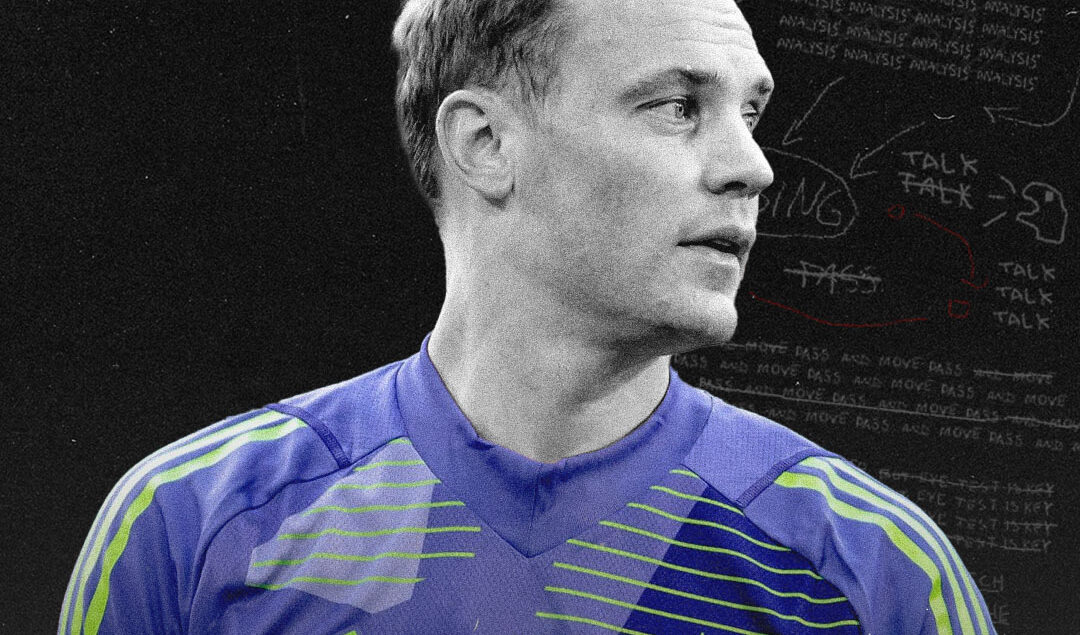Analyzing Bayern Munich’s Start to the Vincent Kompany Era
Many eyes were raised when Bayern Munich announced the signing of Vincent Kompany as their new head coach. Many fans and pundits were stunned that Bayern had chosen the Belgian to lead them, considering he got relegated with Burnley last season.
How Burnley Returned to the Promised Land Under Vincent Kompany
However, Kompany so far has proved doubters wrong, making a fantastic start to life in Germany. They’ve only suffered a single defeat in Europe and remain unbeaten in the league, scoring goals with ease while conceding very few. Fans and people connected to the Bavarian club have every right to be optimistic about this season.
Out of Possession: The Pressing System
From his time at Burnley and even further back with Anderlecht, Kompany has consistently shown a desire for his teams to be bold and brave, both in and out of possession. Utilising a 4-2-3-1 formation with various rotations and adjustments, the Belgian tactician aims to force opponents either wide or through the centre of his midfield when out of possession. Kompany prefers his teams to win the ball back as high up the pitch as possible, employing an aggressive and high-risk pressing style wherever he has coached.
Many believed this approach was his downfall at Burnley last season, and while that may hold some truth, it is certainly working well at Bayern, helping them score plenty of goals. Against Werder Bremen, this philosophy was evident once again. Kompany’s side blocks specific areas of the pitch while leaving others open, forcing opponents into predictable zones where Bayern quickly closes down space.
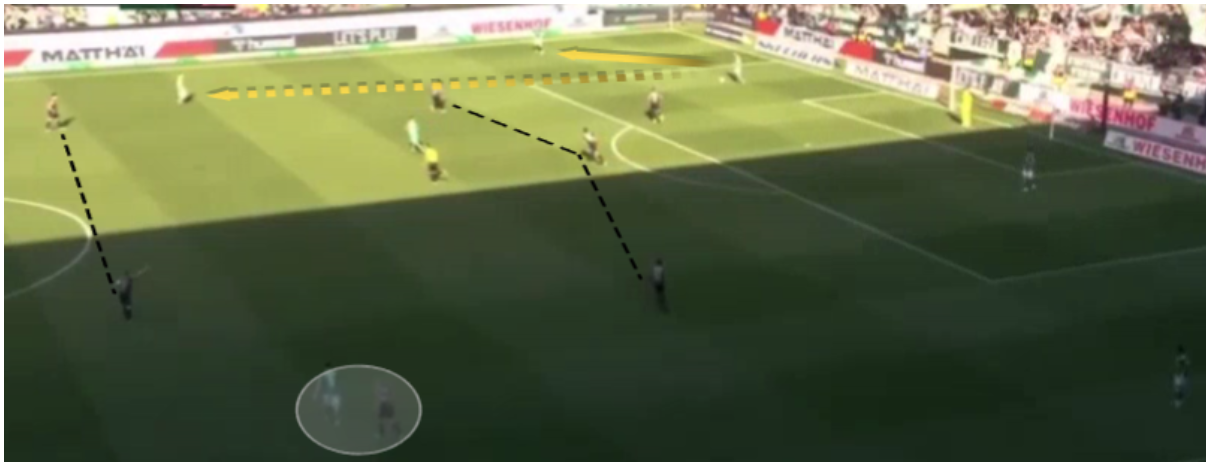
In this game, Aleksandar Pavlović and Joshua Kimmich, the deepest midfielders, split wide to limit Bremen’s passing options in wide areas. Konrad Laimer, the right-back (indicated by the circle), also stays wide to block any potential diagonal passes to that side of the pitch. The wingers, Michael Olise and Kingsley Coman tuck in to close central spaces, forcing the ball wide where Bayern can trap their opponents.
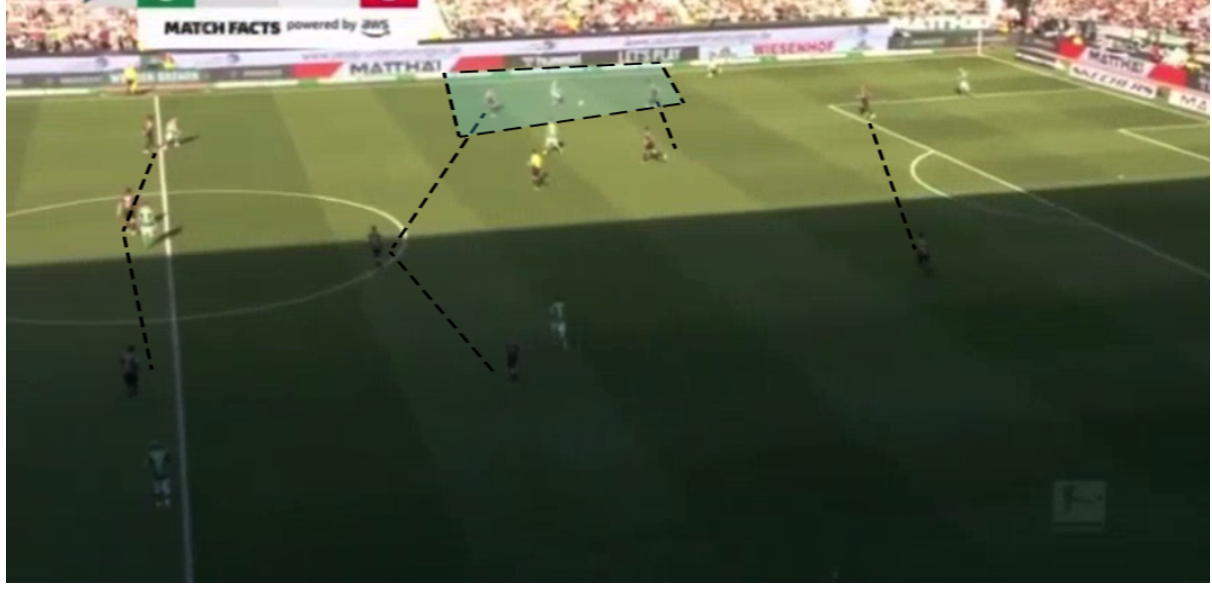
As the ball moves to one side, Coman and Pavlović apply immediate pressure, while Jamal Musiala steps up from the midfield three to block any forward passes through the middle. Alphonso Davies pushes higher, forming a back three with Kim Min-Jae and Dayot Upamecano. This 3-3-2-2 structure squeezes space, forcing the opposition down the line.
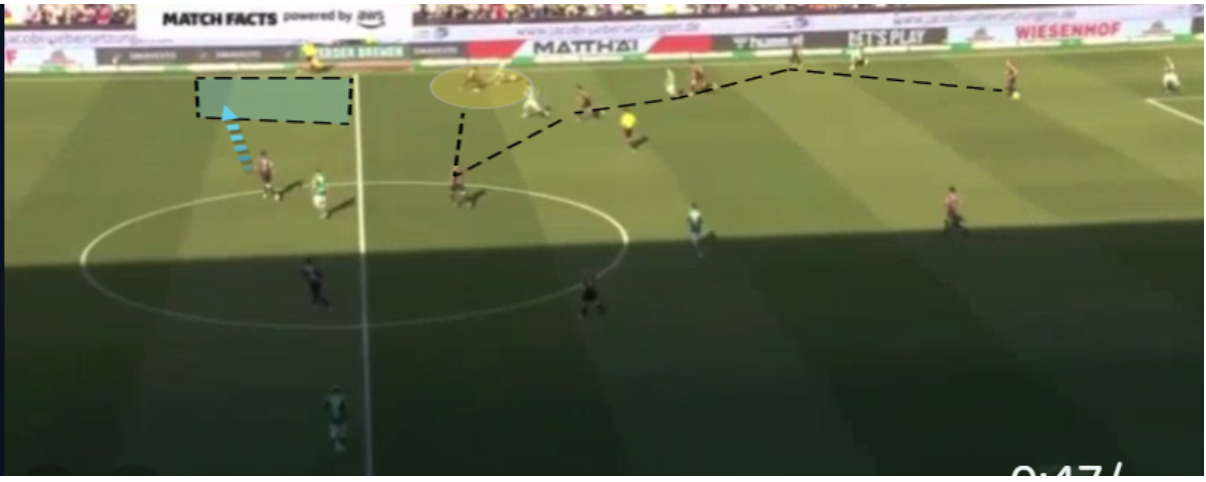
When the ball goes wide, Davies presses the attacker, while Kim Min-Jae covers the space behind him. Bayern outnumbers their opponent on that side with quick movements from Musiala, Pavlović, Kimmich, and even Harry Kane towards that side.
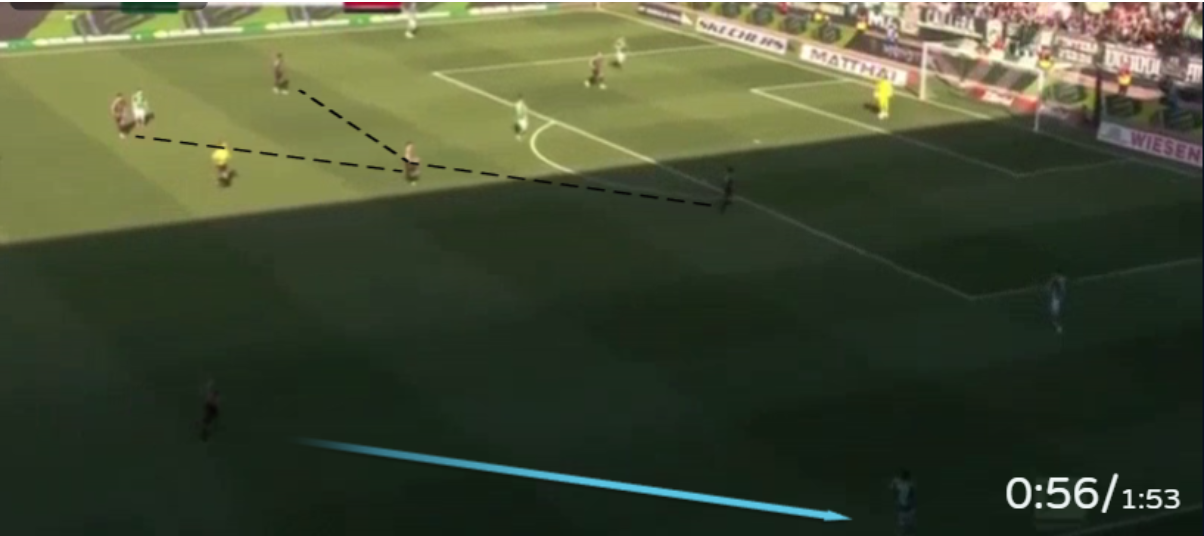
The constant pressure forces the opposition to pass backward, giving Bayern a chance to reset their press. This time, Kimmich and Pavlović push higher as Laimer covers the left side.The opposition’s goalkeeper plays a long ball, but Bayern’s positioning and numerical superiority allow them to win the ball back easily.
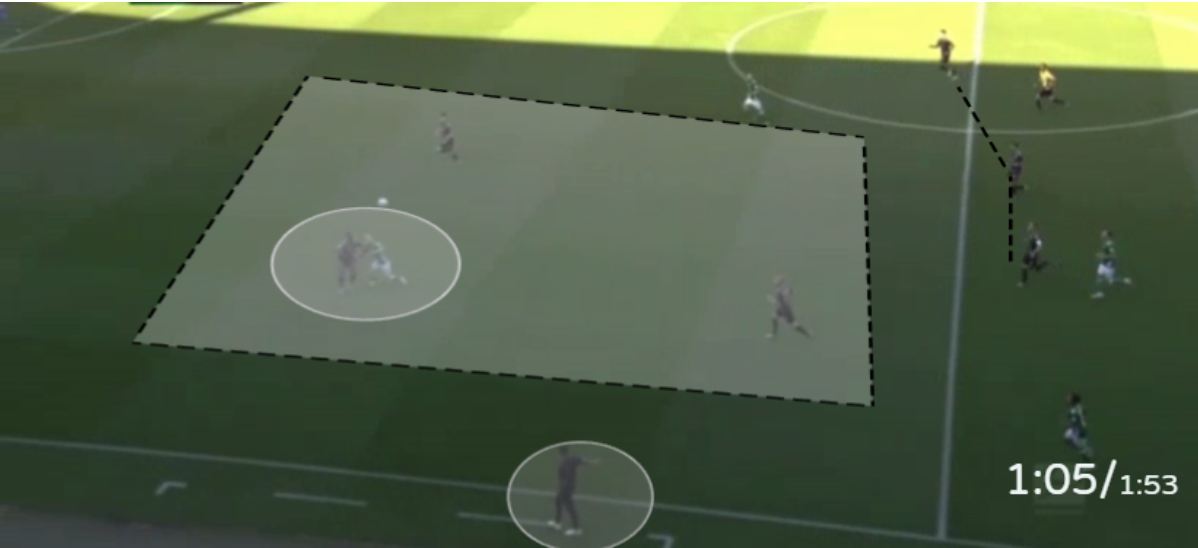
When the ball is played long, Bayern once again hold a numerical advantage due to the positioning of their players across the pitch. Their midfield quickly tracks back to recover any loose balls, as Kompany signals from the touchline. Eventually, Upamecano outmuscles the Bremen player to regain possession for the record Bundesliga champions.
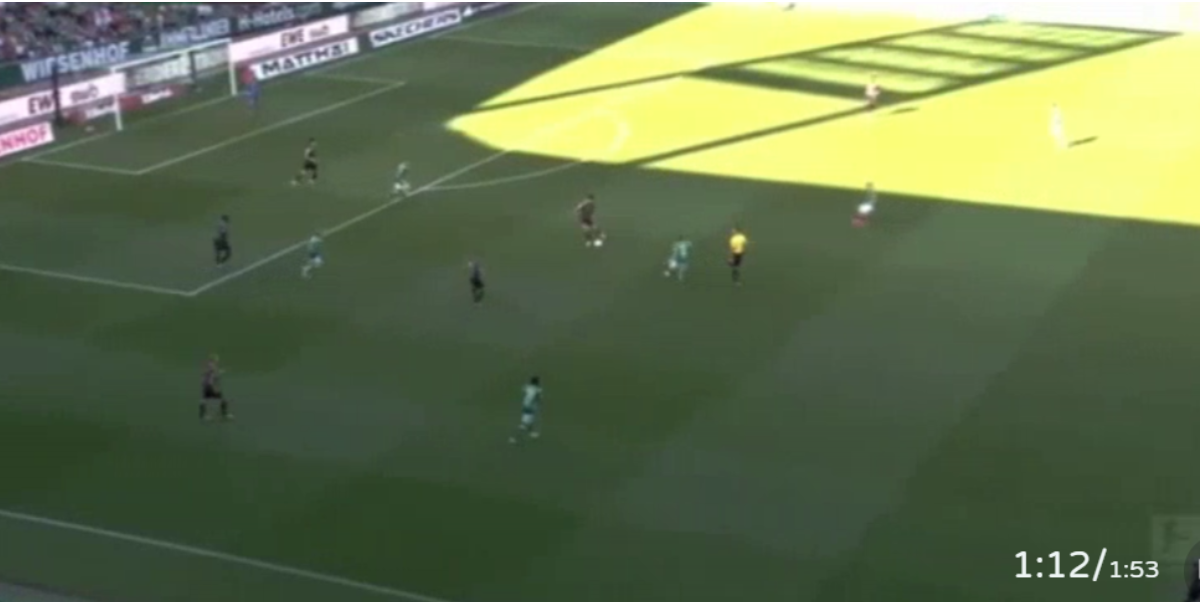
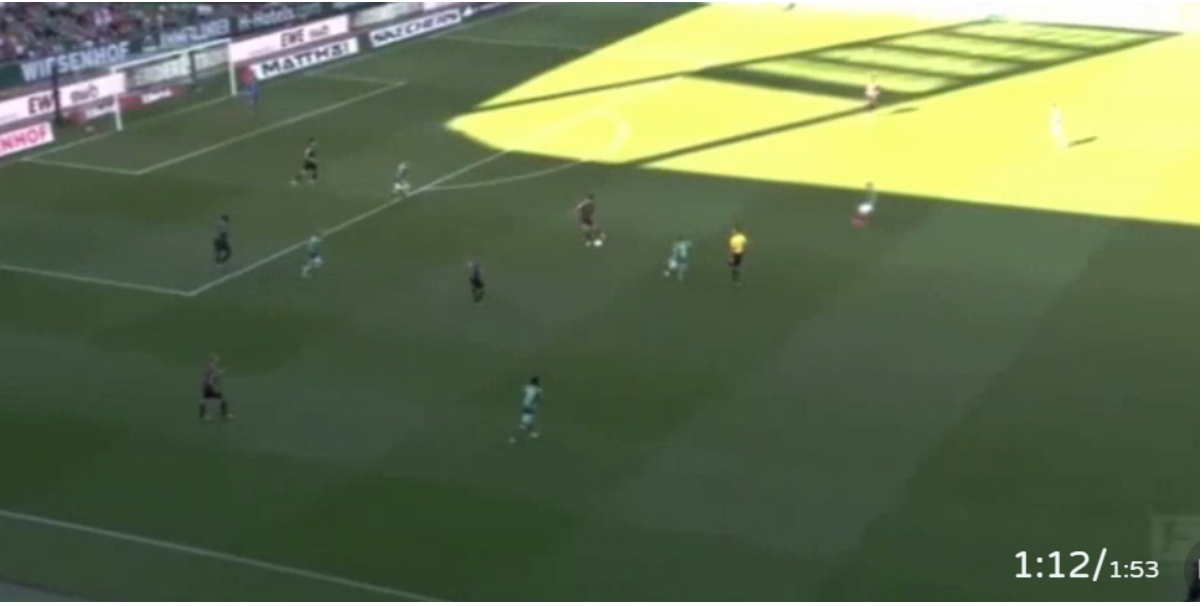
In this instance, Bayern respond to losing possession by immediately applying pressure. Upamecano tracks the attacker, while the positioning of Laimer, Kimmich, Pavlović, and Musiala once again creates a numerical advantage around the ball.
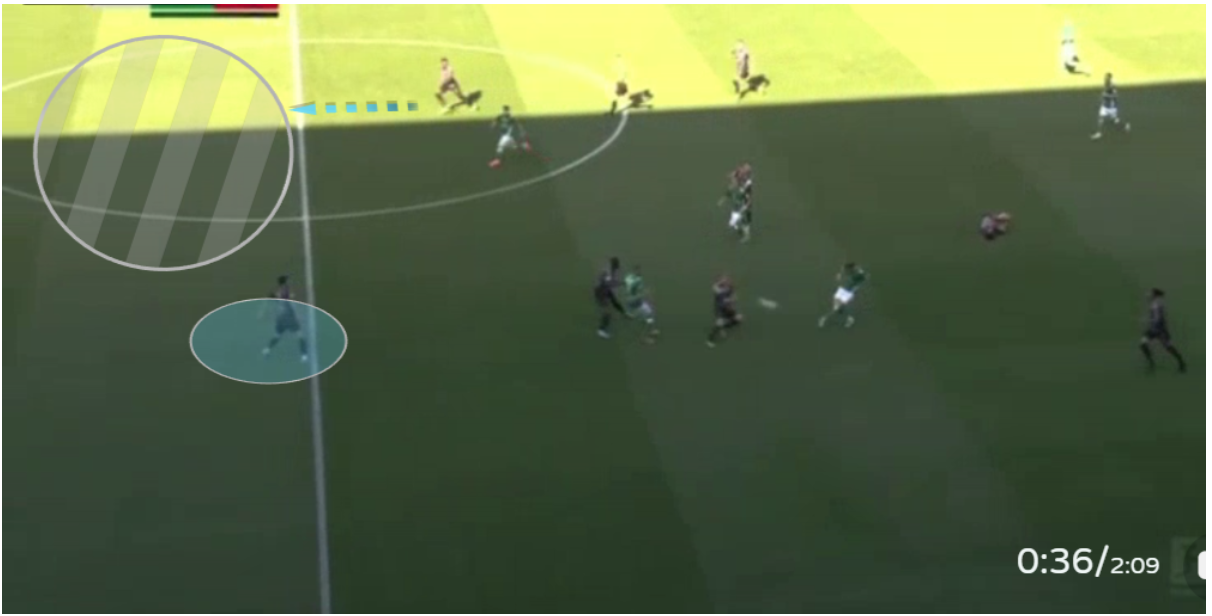
The Bremen player does well to escape the pressure and plays a pass into the space left by Upamecano. What happens next, however, highlights why Kompany’s system is likely to succeed at Bayern. As Upamecano pushes forward, Kim Min-Jae stays back to cover the space. Alphonso Davies also sprints back to help, using his pace to regain possession for Bayern once again.
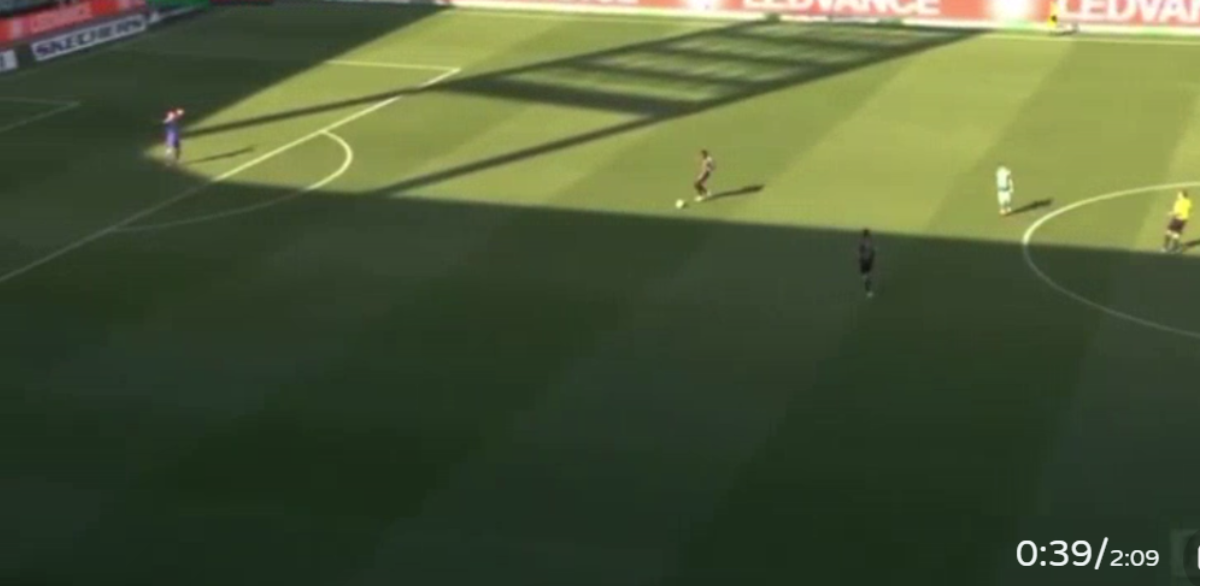
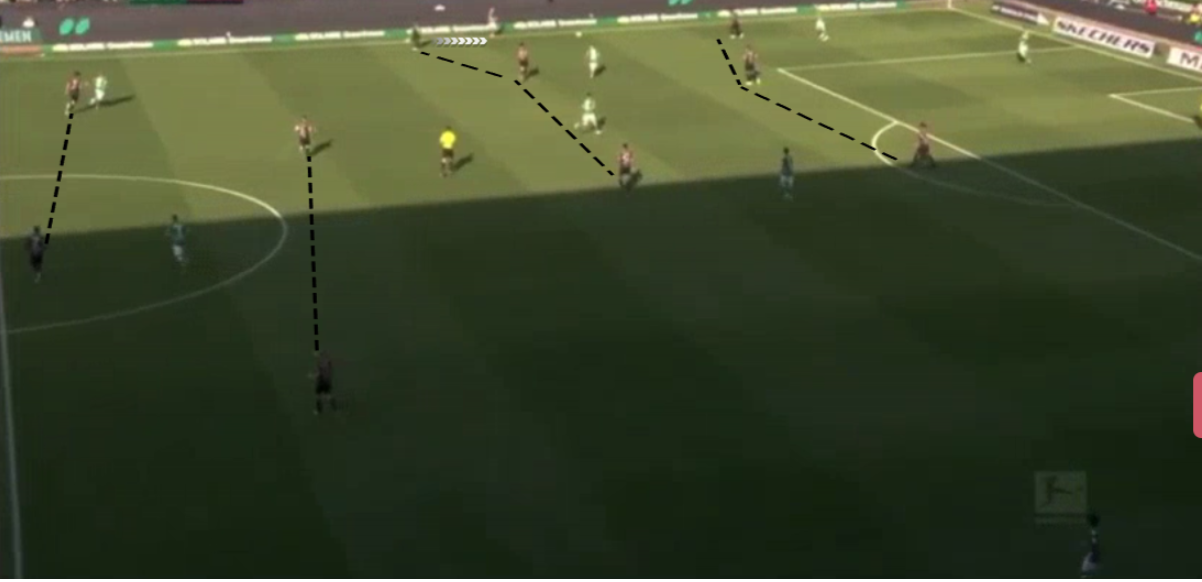
As Werder Bremen pass out from the back again, Bayern push up high to win back possession. This time, however, there are subtle adjustments. Kane drops between Olise and Coman as the ball moves wide. Olise shifts centrally to fill the space left by Kane, forming a three-man press near the box.
Pavlovic pushes up to join Musiala, while Kimmich drops deeper alongside Laimer, who moves inside to create a two-man midfield, protecting the space behind the three-man press and forming a 2-2-3-3 structure. These small tweaks increase the pressure on the ball and reduce the opponent’s time and space.
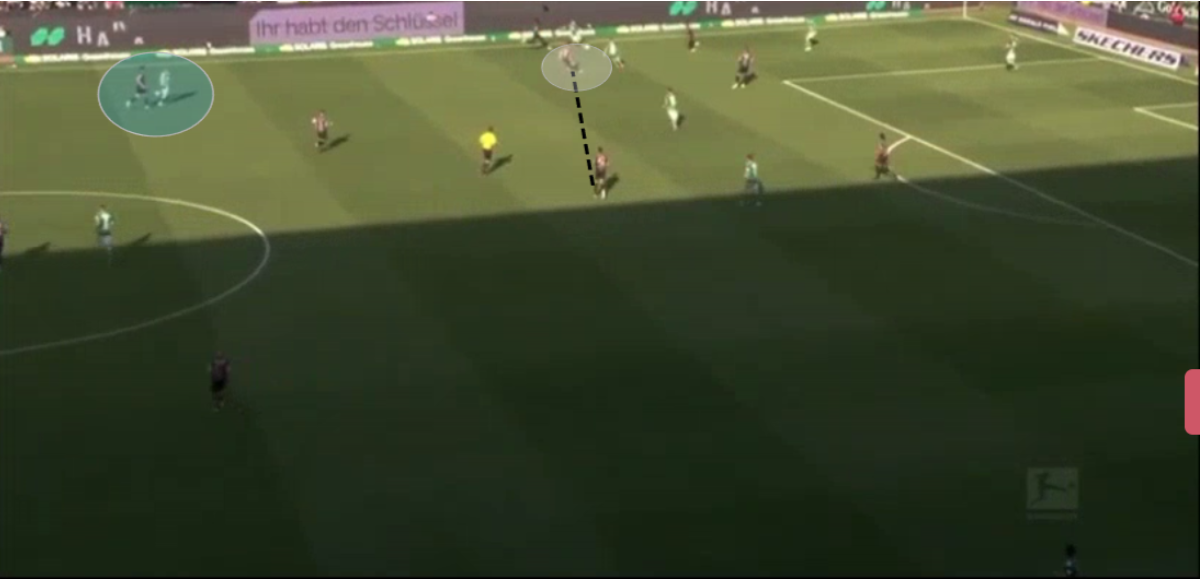
As Davies pushes up from his defensive position to close down the next receiver of the pass, Kim Min-Jae (marked by the blue circle) tracks his man and covers the space left behind by the Canadian full-back. Pavlović (marked by the grey circle) shifts out wide to support Davies, adding more pressure on the Bremen player and reducing his space. The Bremen player attempts a forward pass, but it ricochets off Davies and falls to Harry Kane, with Olise in space ahead of him.
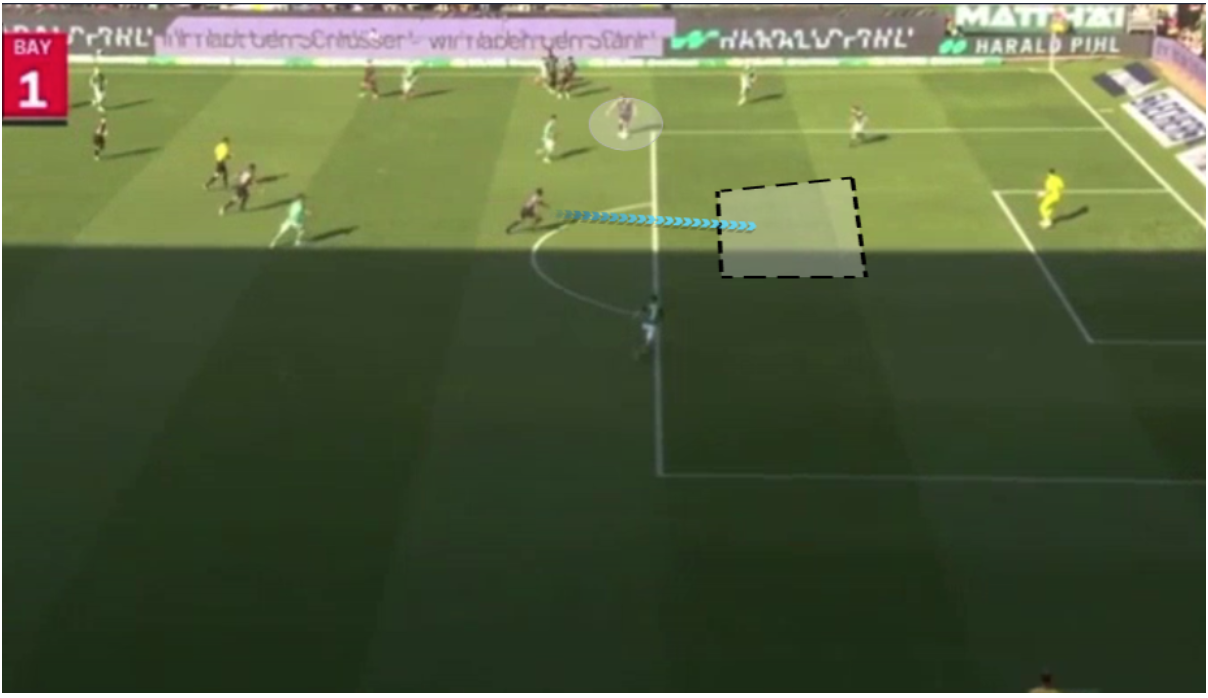
The England captain finds the Frenchman who then slots it past the on-rushing keeper to give Bayern the lead.
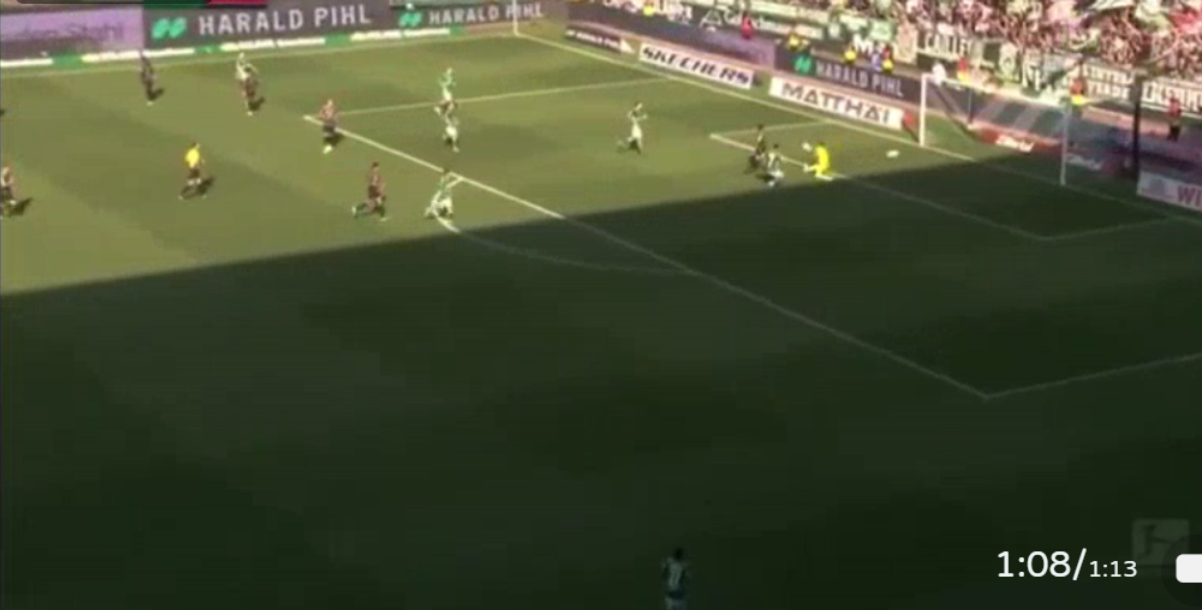
Bayern’s primary objective is to channel the opposition into specific zones on the field, effectively limiting their options. By minimising available space and intentionally leaving certain areas open, they can dictate the flow of the game. Once the opposition makes a pass, Kompany’s side are strategically positioned to close down that exact zone and swiftly regain possession.
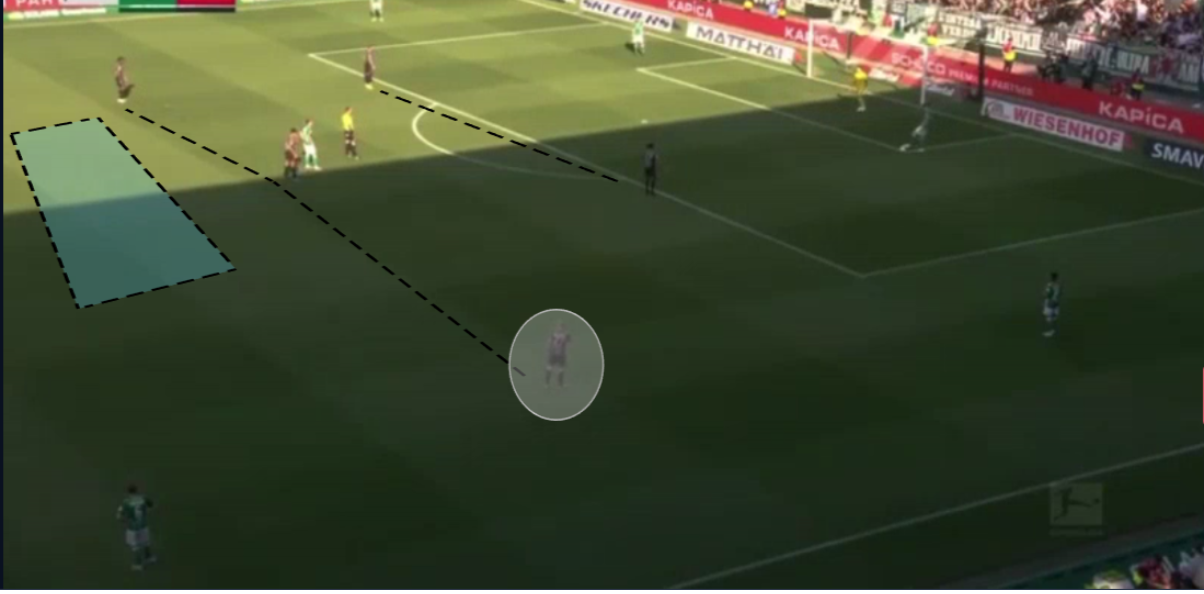
In this situation, Olise partners with Kane near the edge of the box to create a front two. Laimer (marked by the grey circle) pushes higher up the pitch to join Coman and Musiala, forming a midfield three. His shift from his usual position alongside Kimmich and Pavlović opens up space for the opposition to pass into.
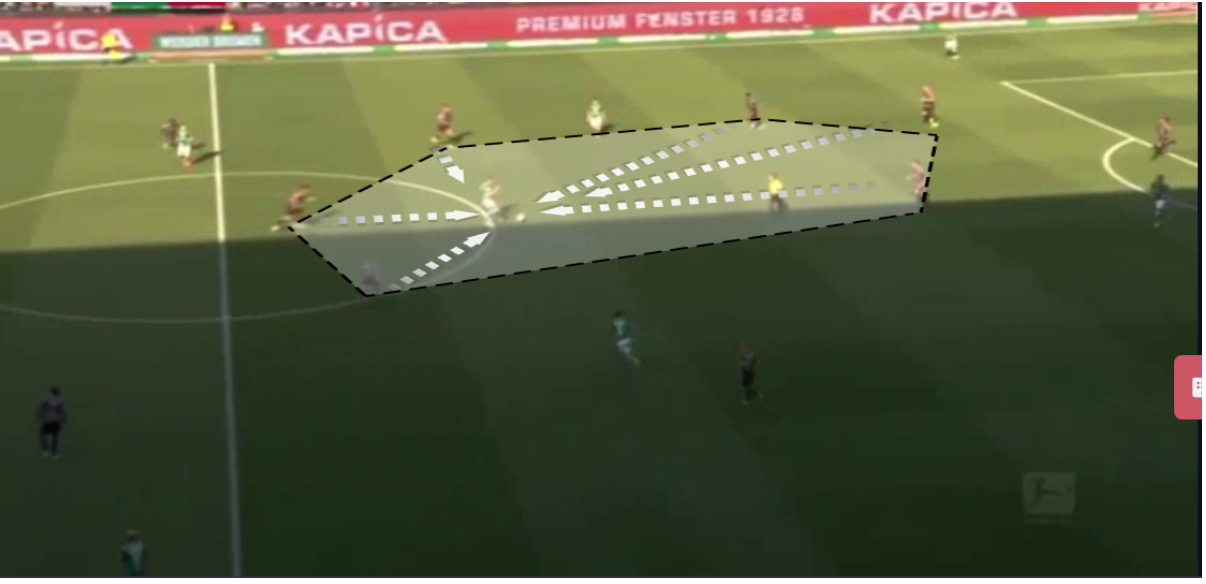
The keeper attempts a pass into the open space. As the Bremen striker receives the ball, Kim Min-Jae closely shadows him. Kimmich and Pavlović quickly close in to apply pressure, while Bayern’s players higher up the pitch sprint back to join the defensive effort.
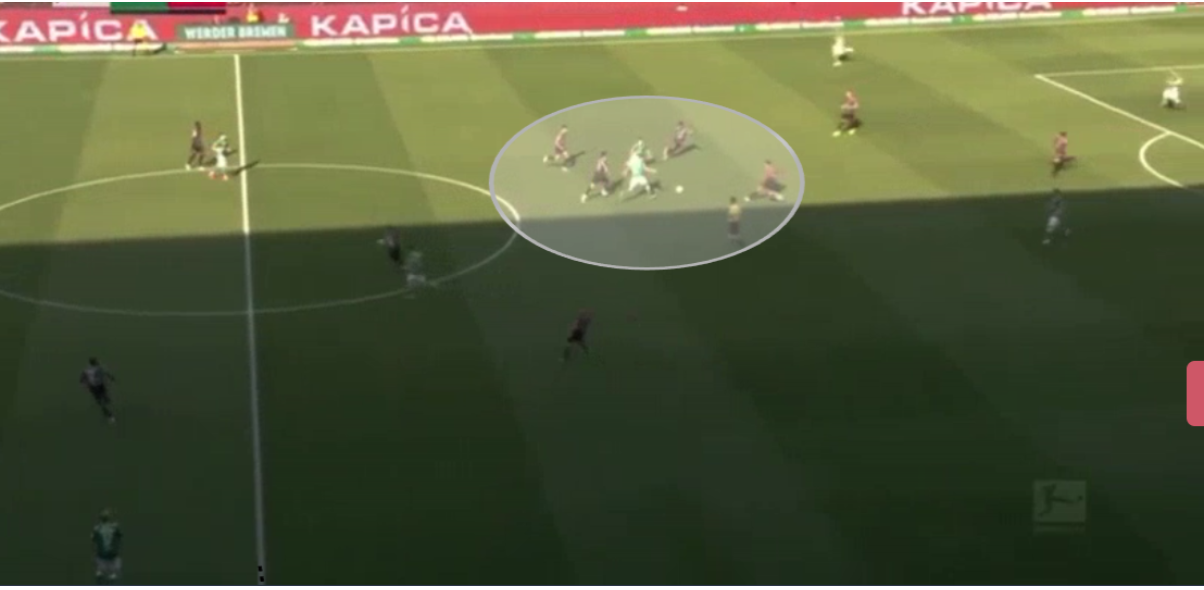
Bayern then end up with four players compared to Werder Bremen’s two and are able to win the ball back fairly easily in an advanced area.
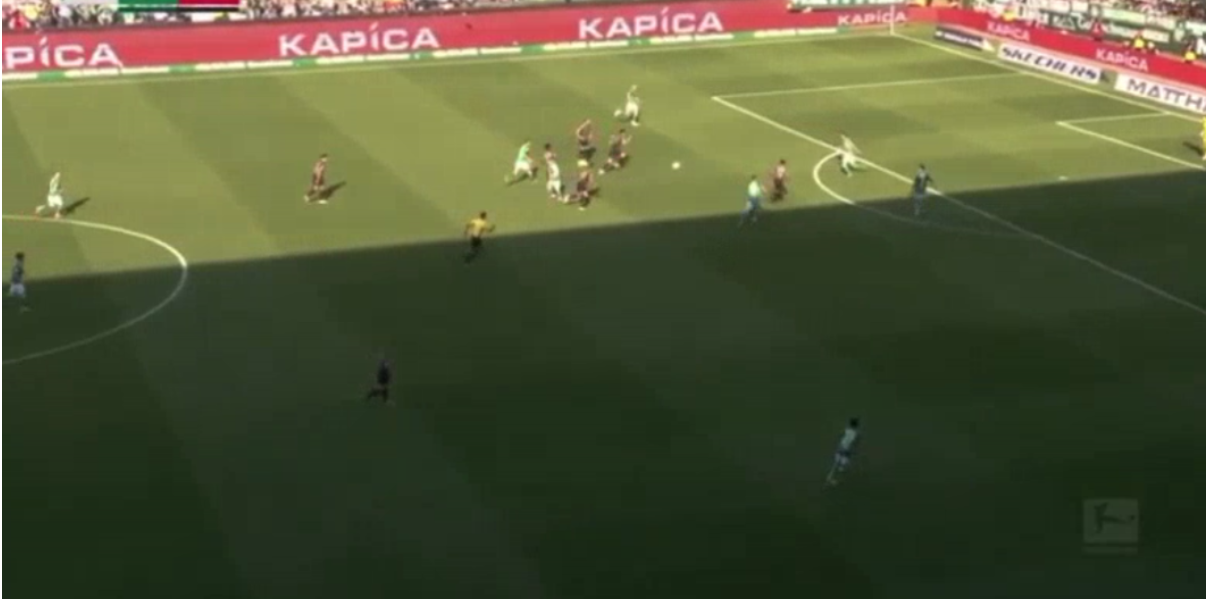
From pushing the opposition to play long balls to enticing them into specific passing zones, Kompany’s Bayern effectively uses various tactics to regain possession quickly. By frequently changing their pressing formations and adjusting player positions, they keep opponents guessing about how to escape their pressure while also creating scoring opportunities in advanced areas. After successfully regaining possession, Bayern shifts its focus to building attacking plays from the back, utilising quick transitions and fluid movement.
In Possession: Build-up Play
Under Kompany, Bayern aims to build from the back to move the ball up the pitch—but they’re also not afraid to go long. They often use diagonal passes or switches of play to break down the opposition’s defence.
Their movement and rotations are fluid, allowing them to create numerical advantages across the pitch as they shift the ball from side to side. With inverted full-backs and midfielders dropping deeper, the Bavarian giants use a range of tactics to open up opposing defences.
Structure, Principles and Patterns
Under Kompany, Bayern don’t follow a single set structure when building up play. However, there are a few key principles that remain consistent. Full-backs, regardless of their position, push high into the opposition’s half. Similarly, centre-backs advance deep into the opponent’s territory to pin them back and maintain pressure.
These core ideas are always present, but beyond that, Kompany’s system is highly fluid and can adapt at any moment depending on the situation.
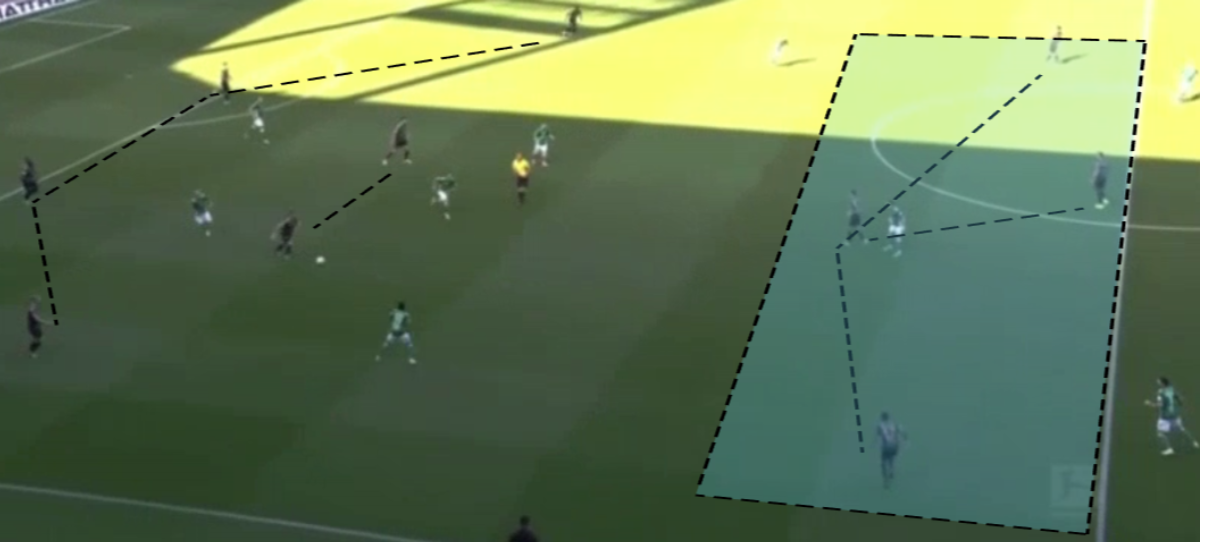
In this instance, Bayern line up in their 4-2-3-1 formation. Kane, positioned furthest forward, drops deeper to create a numerical advantage between the opponent’s midfield and defence. This movement allows Bayern to shift the ball more easily to the left-hand side, finding Alphonso Davies in space.
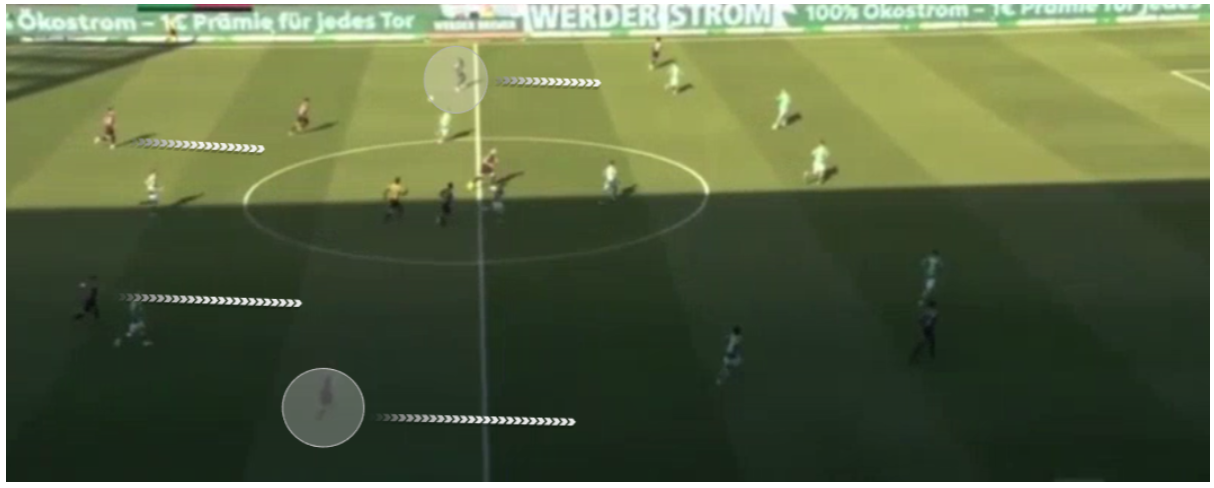
Once the ball reaches Davies, he and Laimer drive forward down their respective flanks. Meanwhile, centre-backs Upamecano and Kim Min-Jae push higher up the pitch, advancing in line with the rest of the team.
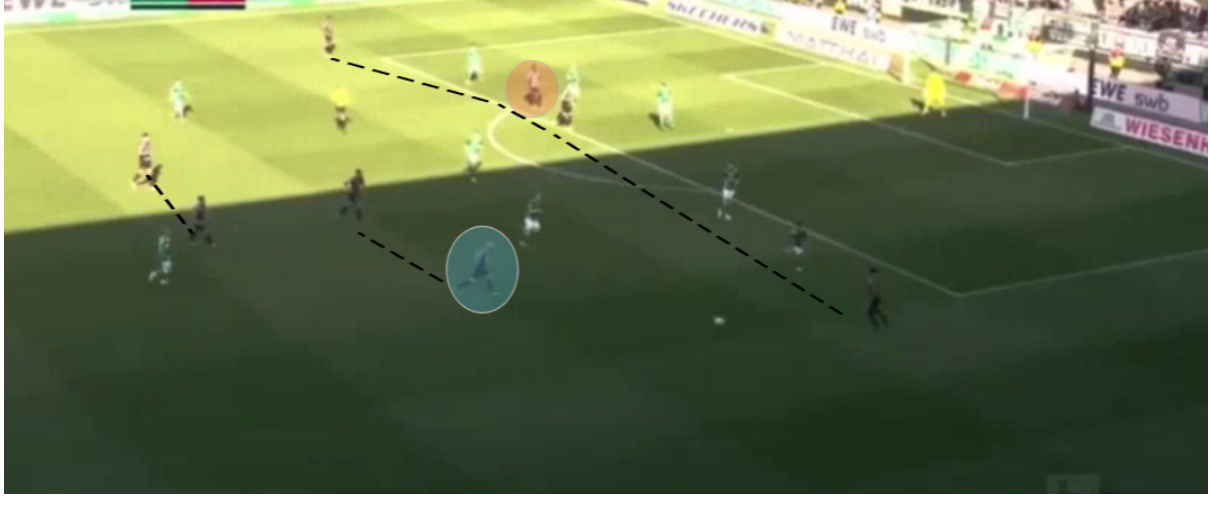
Davies then passes to Laimer (marked by the blue circle), who shifts from the right flank into a central position, forming a two-man midfield higher up the pitch. Pavlović and Kimmich then stay deeper in order to protect the space in behind Laimer and Musiala and form a 2-2-4 formation with Davies (indicated by the circle) running into the box to form a straight four man attack across the
The position of the winger is also key to this particular passage of play, with both Olise and Coman holding their width and thus allowing Laimer and Davies to invert and push further up the pitch.
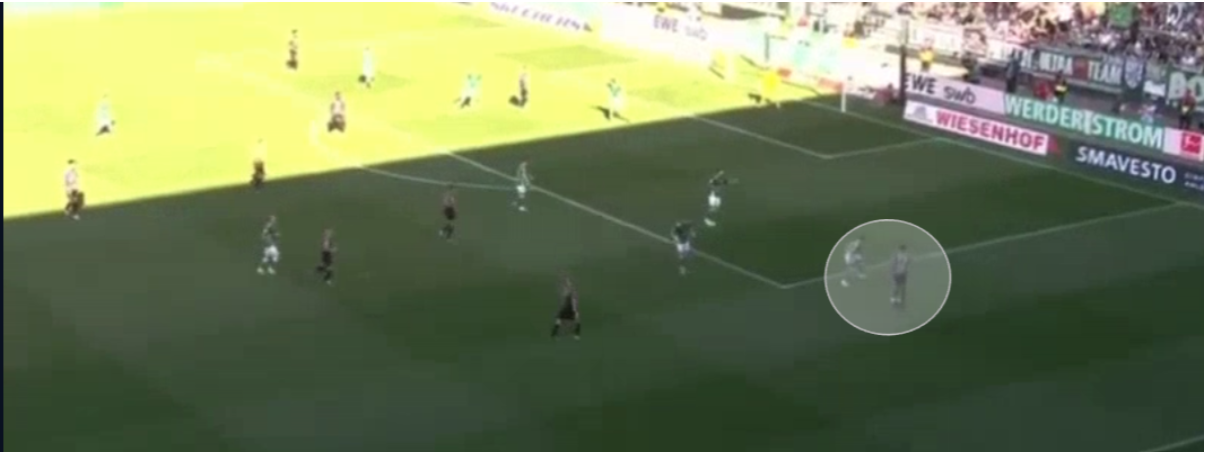
This isolates Olise 1v1 against his full-back, with time and space on the ball. He then crosses the ball into the box for Musiala and creates a good chance for the German. In this pattern of play, Bayern started with a 4-2-3-1 formation and ended up with a 2-2-4 formation by the end of the move. They showed great variation and movement, especially by the full-backs, to create 1v1 isolations with the opposition’s full-backs.
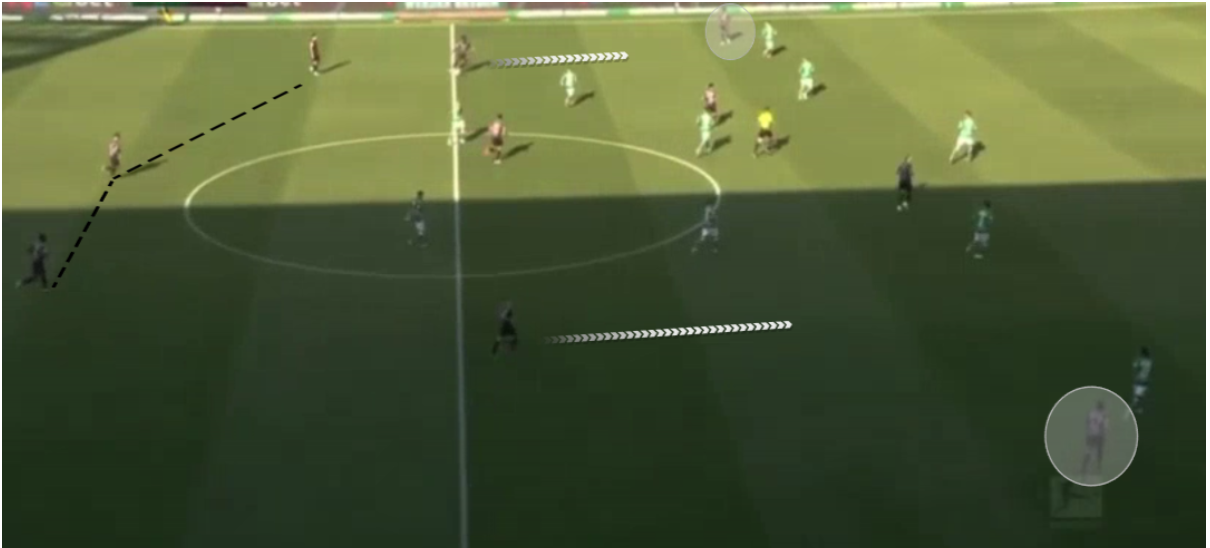
Here, Kimmich drops deeper, in between both centre-backs, who split to form a three-man backline. The full-backs then charge forward, while Olise and Coman remain high and wide to once again find opportunities to isolate themselves with their opposing full-backs.
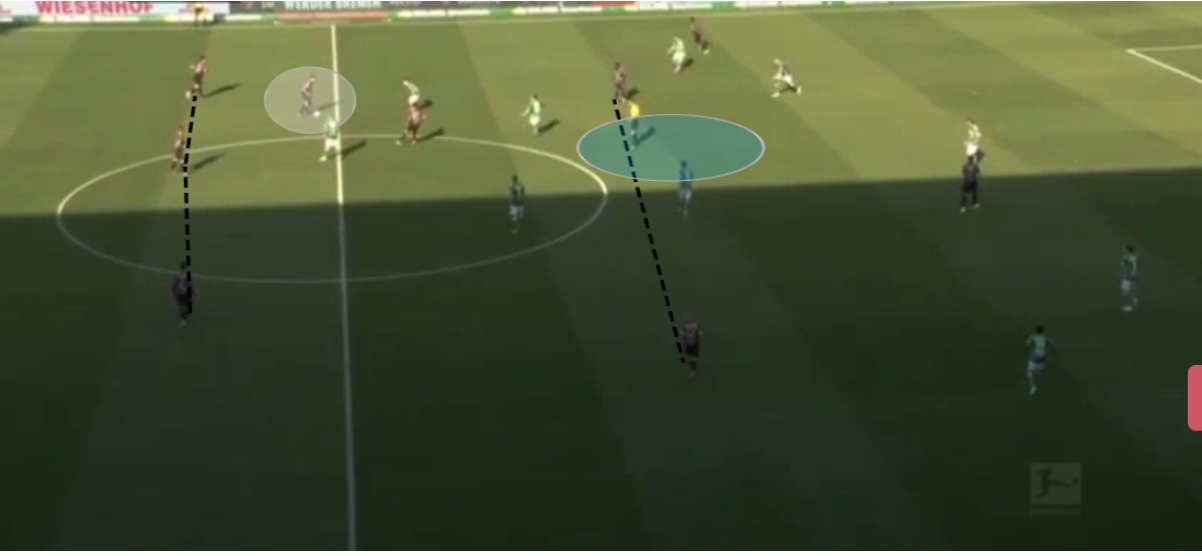
Musiala (indicated by the grey circle) drops to receive possession in his own half. This creates space behind Werder Bremen’s midfield. Davies and Laimer react to Musiala’s movement and invert to try and receive the ball in that area.
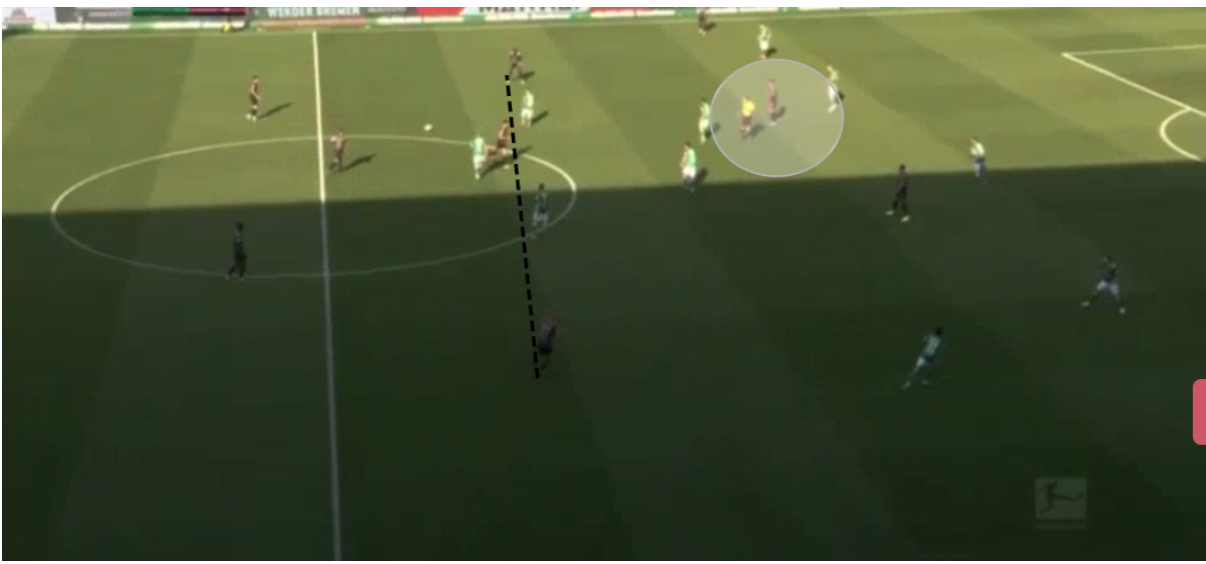
Bremen are able to close down the space but as Musiala pushes forward into his number 10 role, Davies and Laimer drop deeper into space to receive passes.
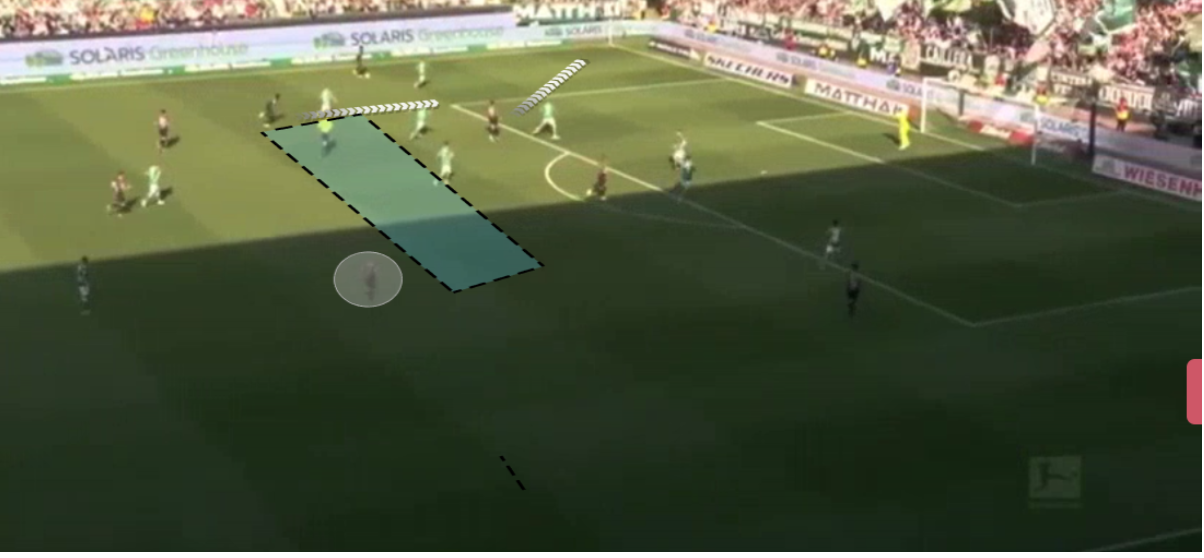
Davies and Musiala then make runs in behind the Bremen defence, and their movement creates a huge space in the midfield for Laimer (indicated by the circle) to run into.
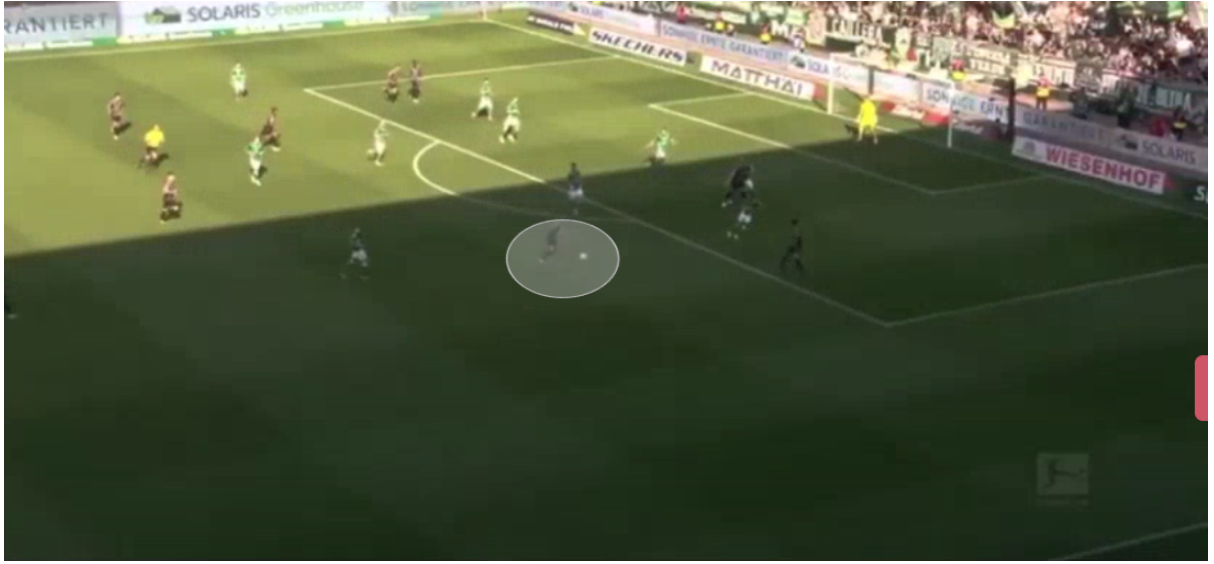
The Austrian fullback is able to receive the ball with time and space to have a clear shot at goal. The ball does not end up in the back of the net, but Bayern, through the relational movement of three players, created an opportunity.
This shows that under Kompany, the team moves or makes runs based on the movement of the other players. So, although the system is fluid, there is some structure within the fluidity.
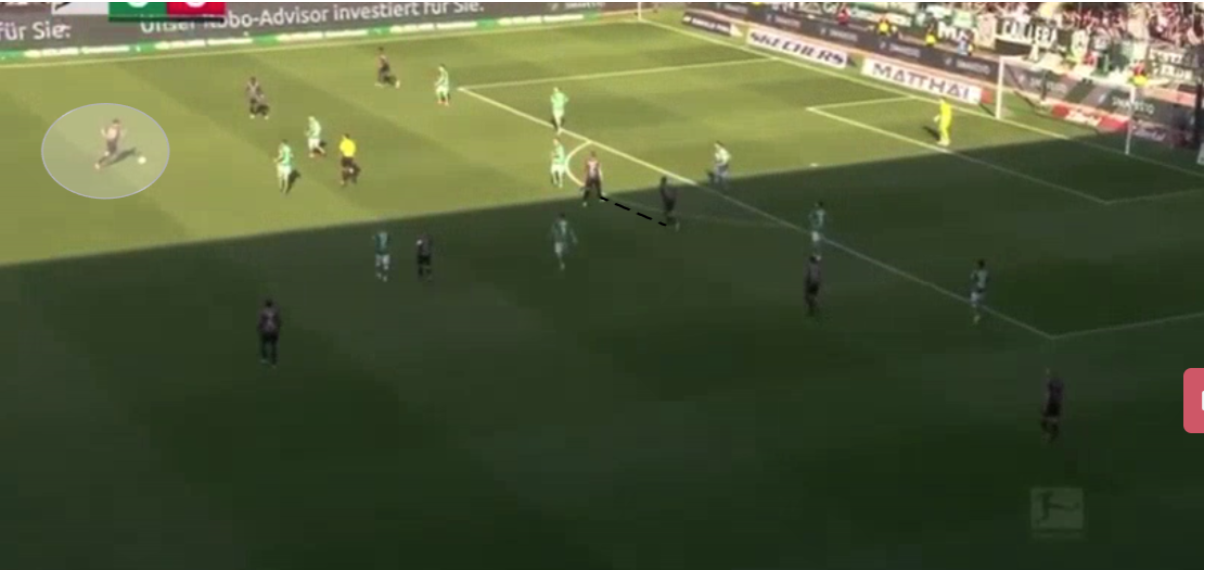
In this instance, the relational movement between Pavlović, Musiala and Kane creates a chance for Bayern. Kane first drops deeper to create a front two with Musiala.
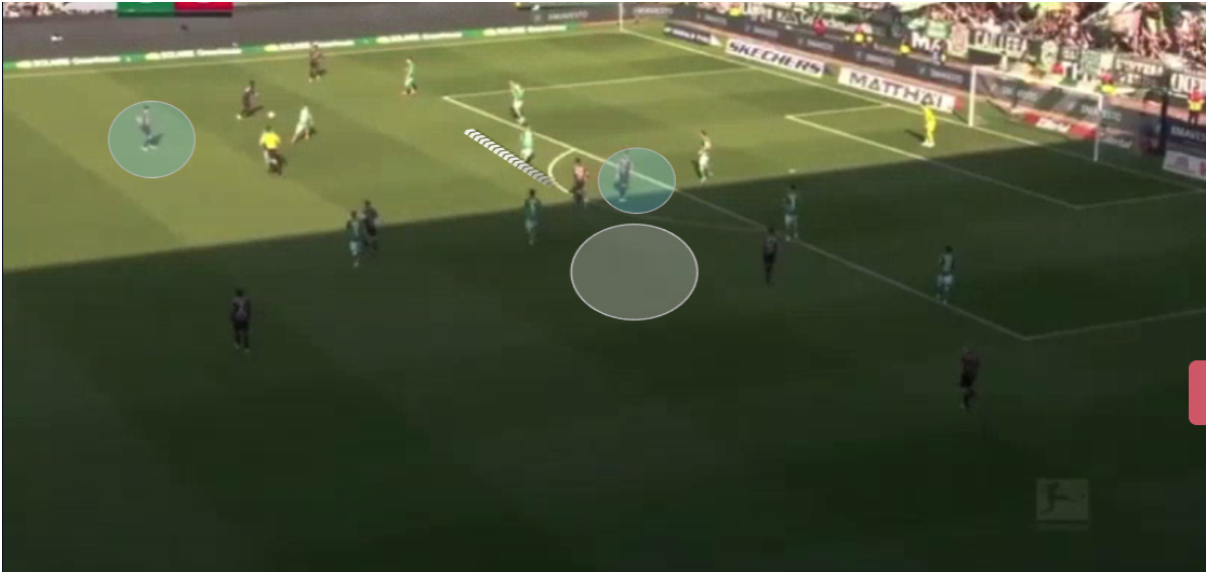
Musiala then drifts wide to receive a pass while Kane stays central. Musiala’s run creates a space for someone to run into.
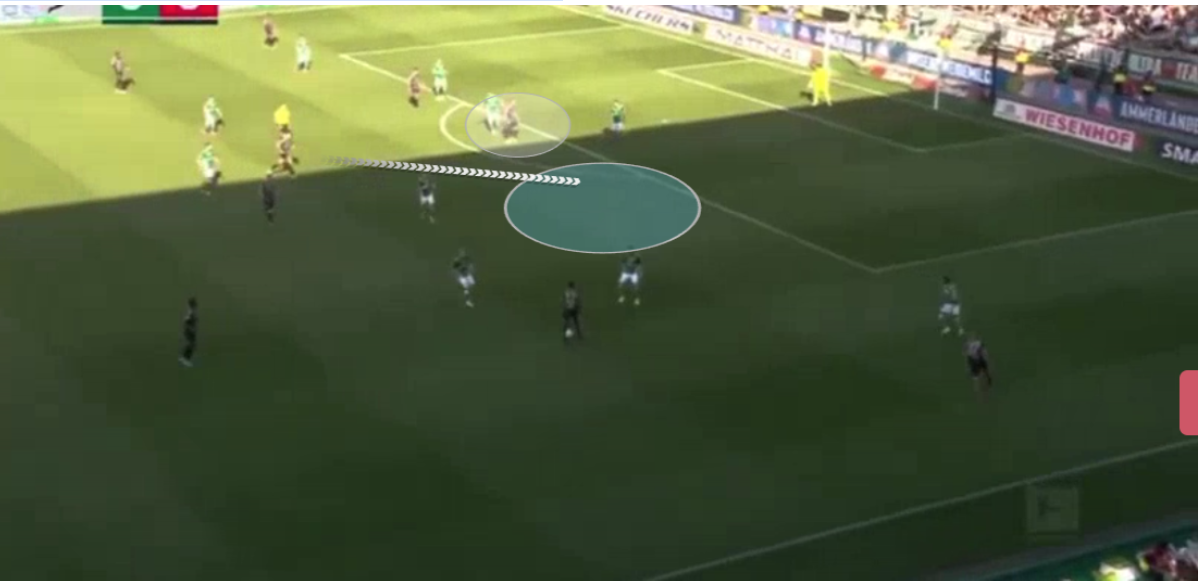
Bayern move the ball to the right flank to Olise. As he receives the ball, Pavlović makes a darting run into the space created by Musiala’s initial run. Kane stays central and draws the attention of the Bremen centre-backs, thus preventing them from closing down the space Pavlović is running into.
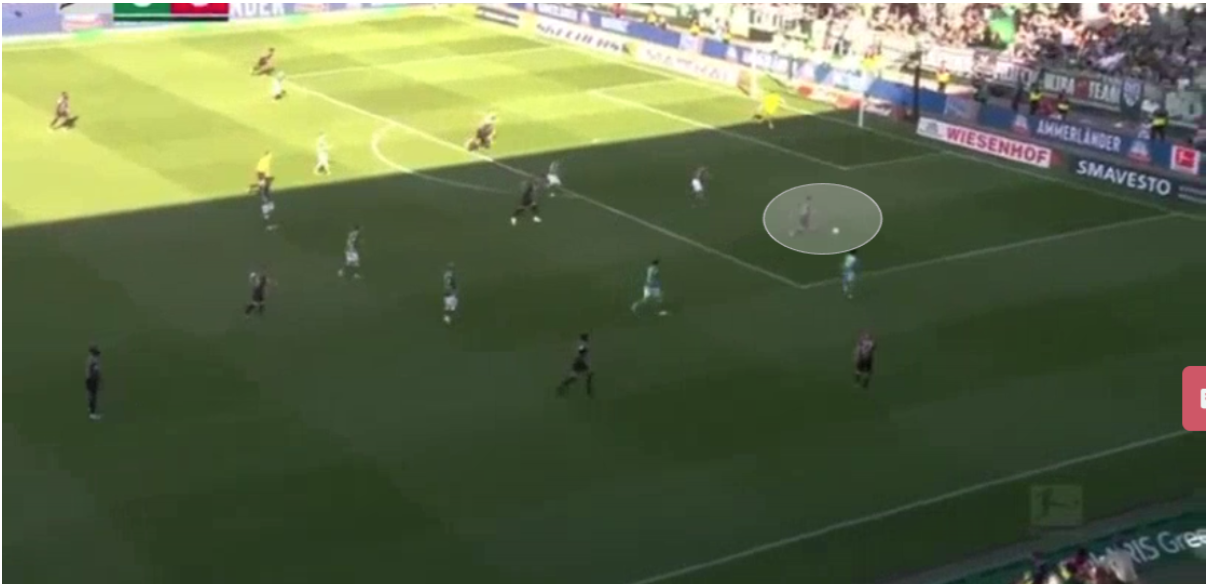
Pavlović then receives the ball and delivers a dangerous low cross, which almost leads to a shot on goal for Bayern. Once again, through the relational movement of three players, Bayern create another presentable opportunity.
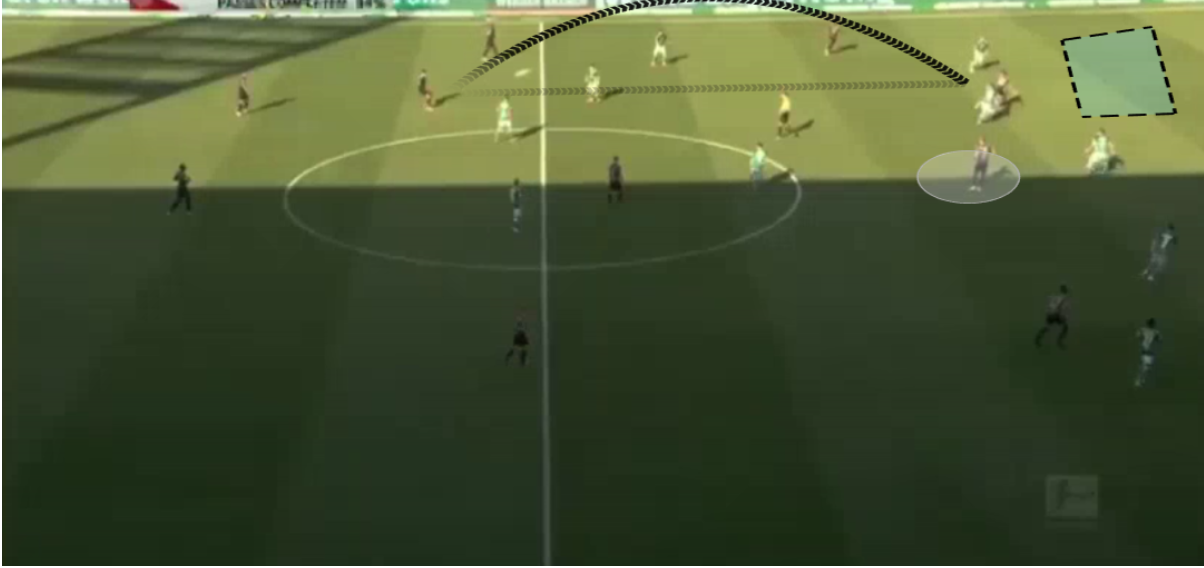
Here, Pavlović plays a long ball in behind the Bremen defence to find Musiala in space. This space is created by the movement of Kane into a deeper position. As soon as Kane drops deeper, Musiala makes the run forward, almost as if they are playing like a front two, with either man acting as a second striker at any moment.
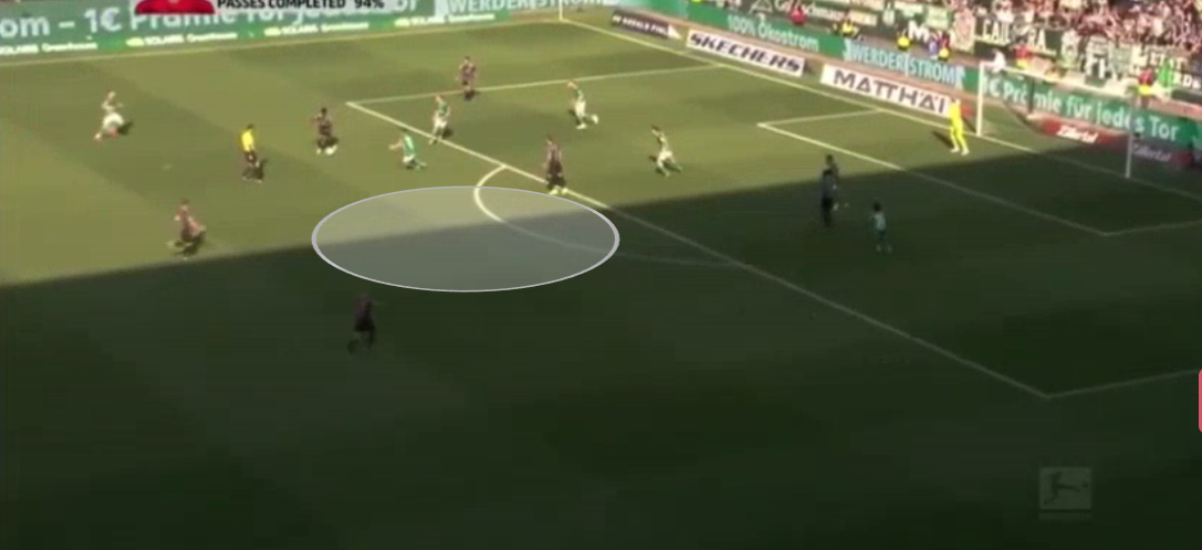
The movement of Musiala drags Bremen players into the box and creates a huge space for Bayern at the edge of the box.
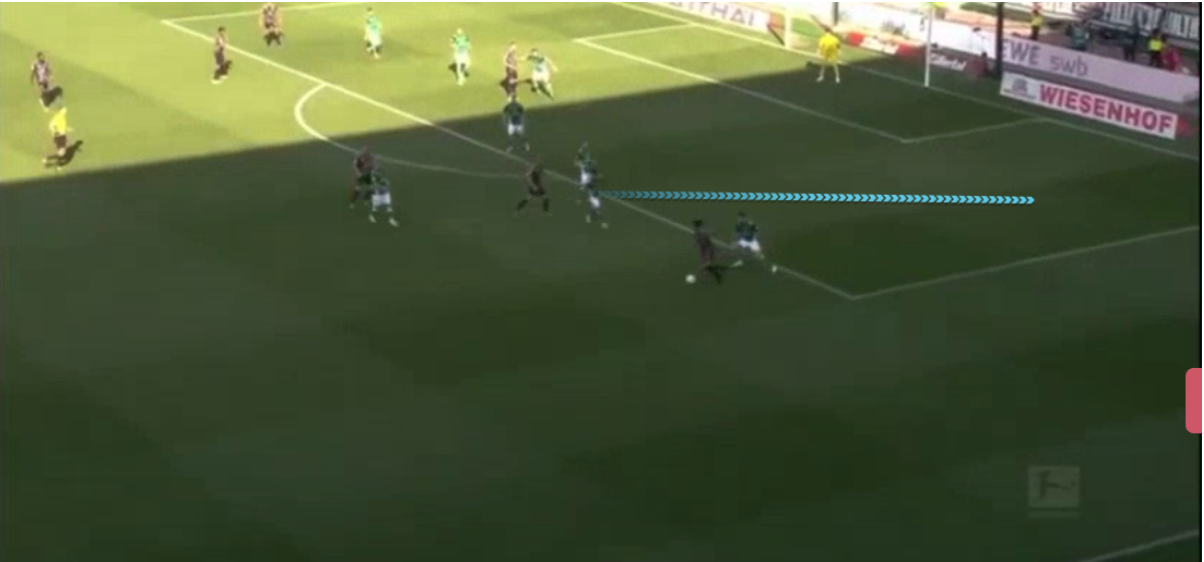
Coman makes the pass into space for Laimer to receive. The Austrian then passes the ball into Olise and makes a run in behind, drawing two players with him. Olise then moves inside and into the space created by Laimer’s run. This is another example of the interchangeable movement and rotation that Kompany has introduced since taking over.
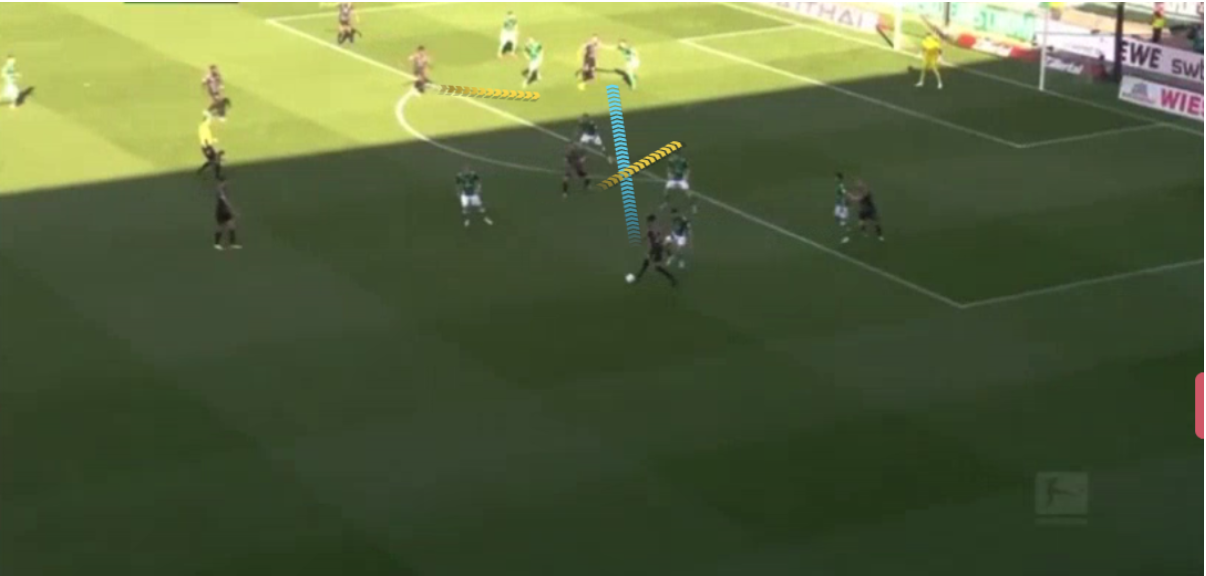
The Frenchman then plays the ball into Harry Kane. As the ball is moving both Coman and Kimmich react and make runs into the box.
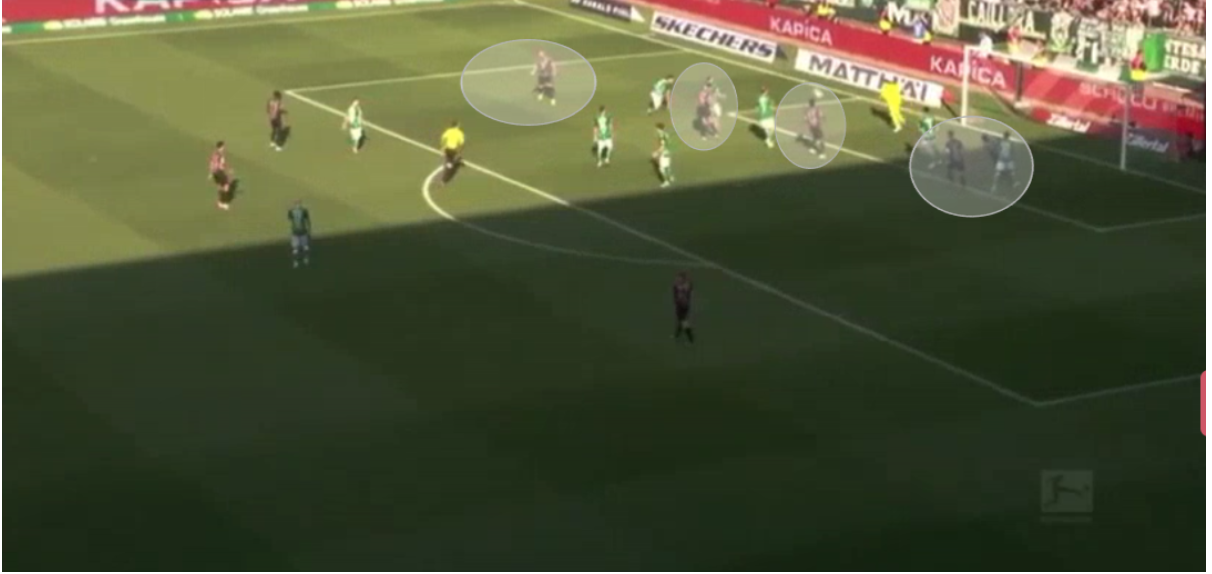
Kane ends up having his shot blocked, but by the end of the move, Bayern have five players in the box and three just outside of it. Through simple coordinated movements and runs, they are able to flood the box and get into advanced areas.
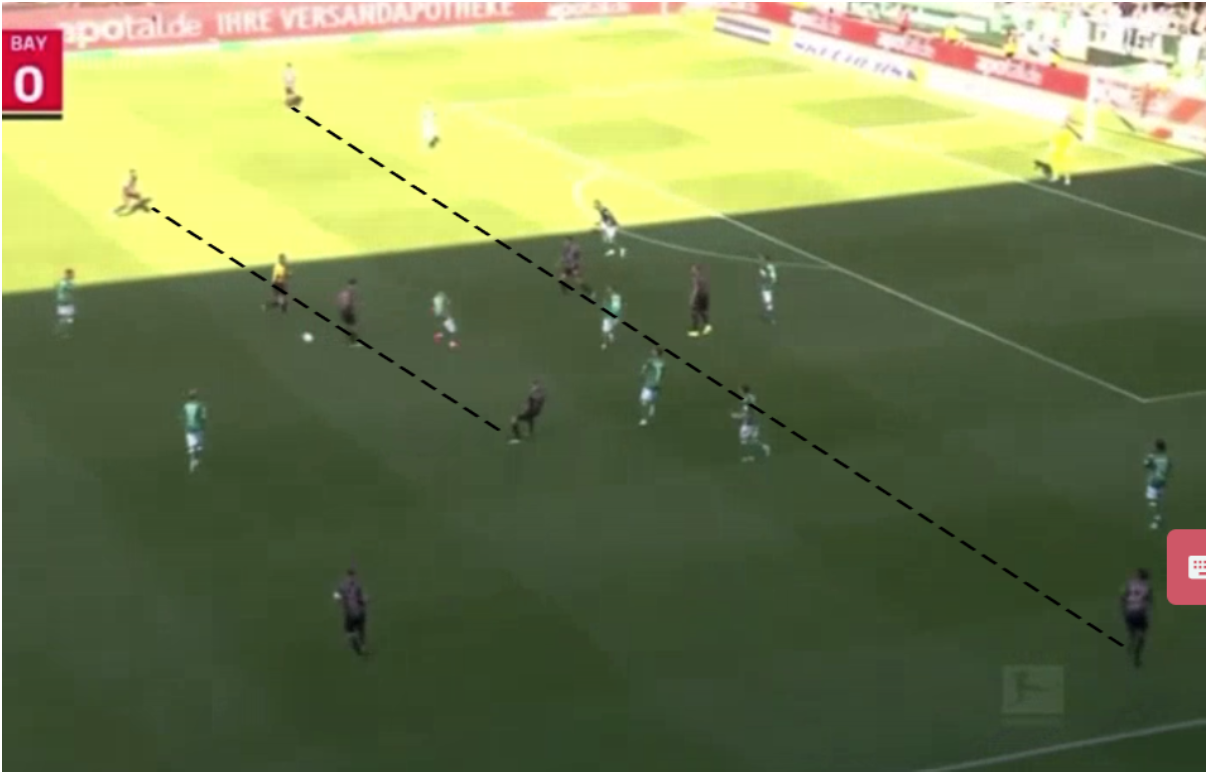
Here, the two fullbacks Laimer and Davies are high and narrow while their wingers Olise and Coman stay high and wide.
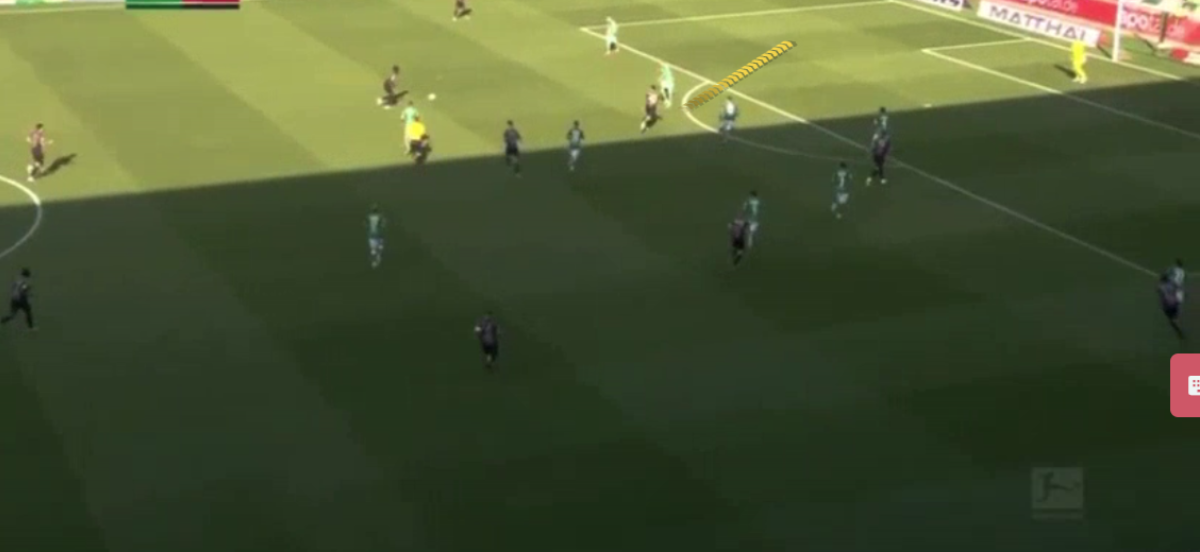
Laimer passes the ball to Davies who then finds Musiala in behind the Bremen defence again.
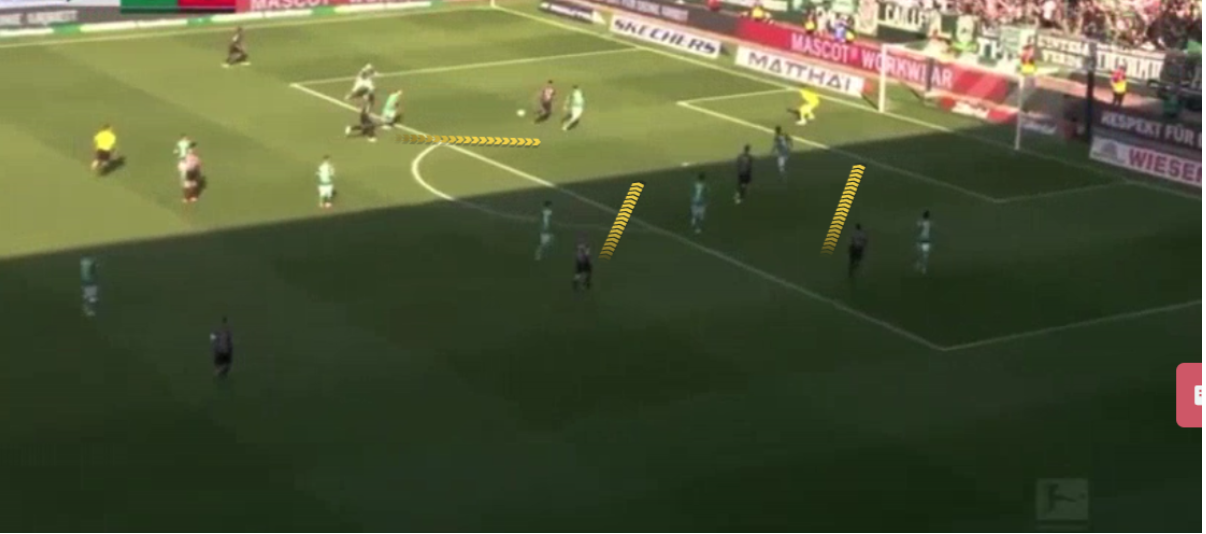
As soon as Davies plays the pass, the Canadian makes a run into the space vacated by Musiala. Kimmich and Olise also join in, making runs into the box. Although Musiala’s cross gets blocked, Bayern once again have four players in advanced areas within the box. Later on in the half, they make it count.
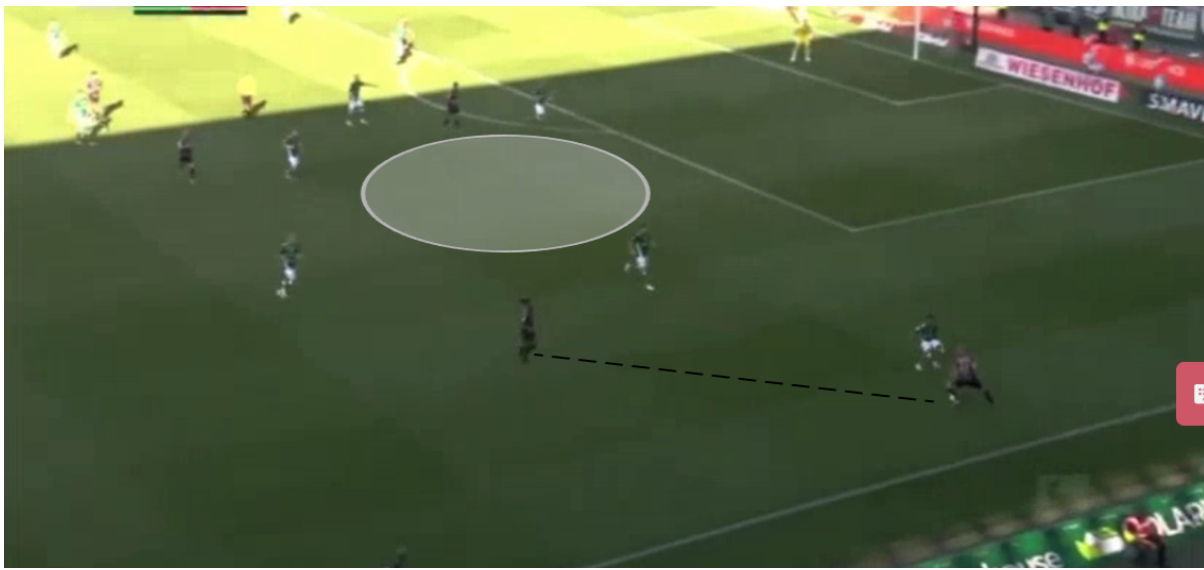
Once again, Laimer finds himself high but this time in a wider position. Olise then moves inside to give the Austrian fullback more time and space on the ball. His movement inside drags a Bremen midfielder towards him and creates space for someone to run into.
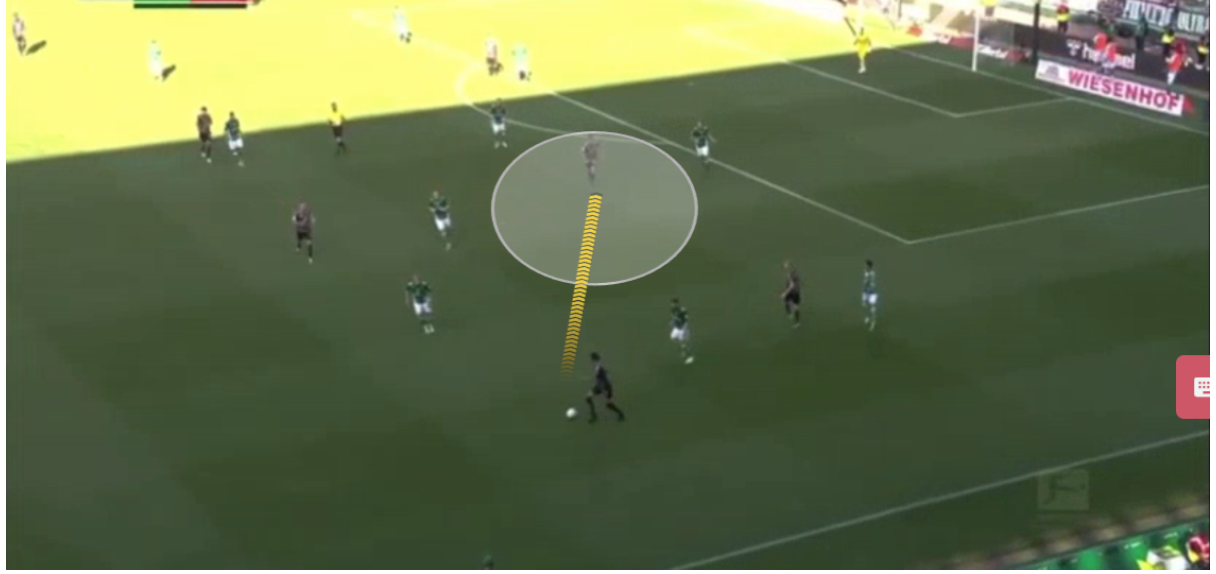
Musiala recognises the space and drops deeper to receive a pass from Olise.
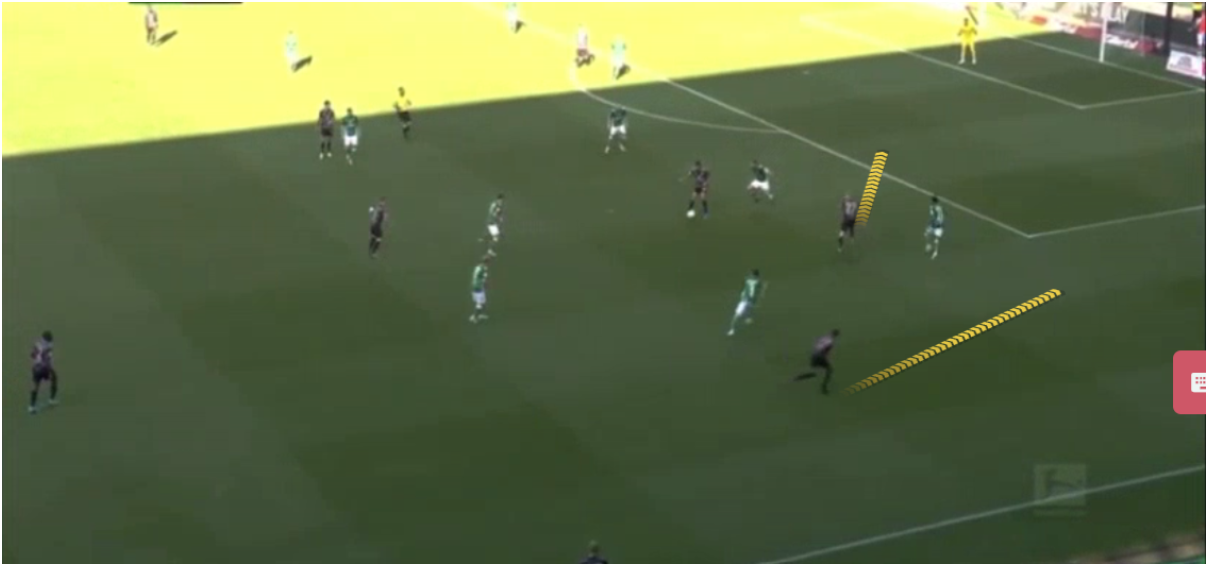
The Frenchman, upon releasing the ball, makes a wide run, while Laimer reacts by moving inside to create space for him.
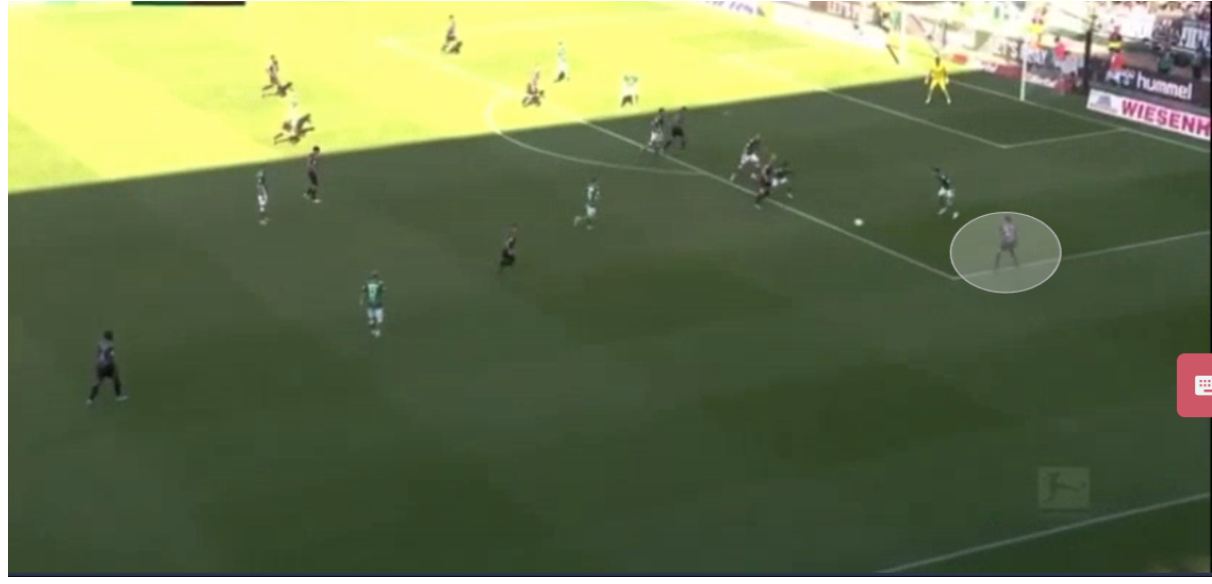
Laimer finds Olise wide with a 1v1 situation.
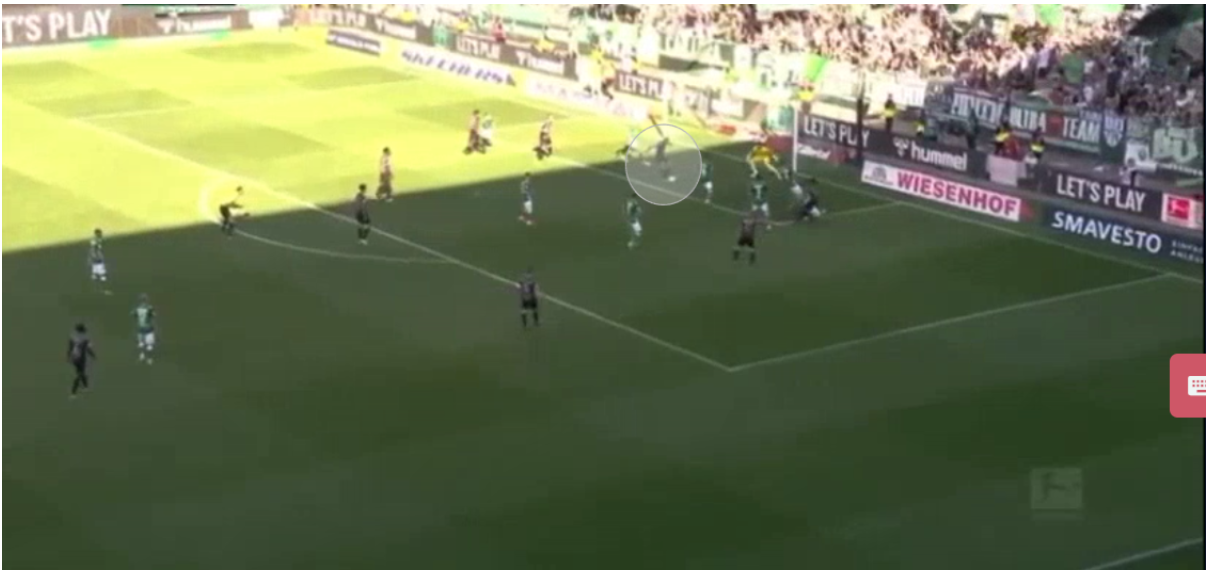
Olise beats his man and delivers a brilliant cross for Musiala, who has an easy tap-in. The move ends with Bayern having six players in the box and two just outside it. Using the movements and runs of Musiala, Laimer, and Olise, they flood the box once again, isolating Olise with the opponent’s fullback to score a goal.
These situations occur repeatedly, showing that these movements are not random. Kompany has drilled this team, implementing various patterns and dynamic positioning that have become almost automatic. From fullbacks inverting and wingers holding their width to Harry Kane dropping deep and Musiala making runs in behind, Bayern now employs various patterns during matches.
Serge Gnabry Determined to Make Most of Fresh Start Under Kompany
They constantly switch formations, with Kimmich or Pavlović sometimes dropping back to create an extra defender, while Pavlović makes diagonal runs and plays almost like a number 10 during games. There is constant rotation, and within this fluidity, there is a structure designed to overload and flood the opposition box, creating chance after chance.
Conclusion
Kompany may not have faced relegation with Burnley, but that doesn’t diminish his reputation as an impressive tactician. From his tenure at Burnley in the Championship to his time at Anderlecht in Belgium, he has consistently demonstrated a commitment to relentless attacking football.
His arrival at Bayern may have surprised many, but this is just the beginning of his journey. In a remarkably short time, the Belgian has firmly established his authority and distinctive style of play within the team. With a blend of experience and youthful talent at his disposal, the sky’s the limit for the German giants under the Belgian.
By: Mark Bruce / @MarkV_Bruce8
Featured Image: @GabFoligno / Luciano Lima / Getty Images
